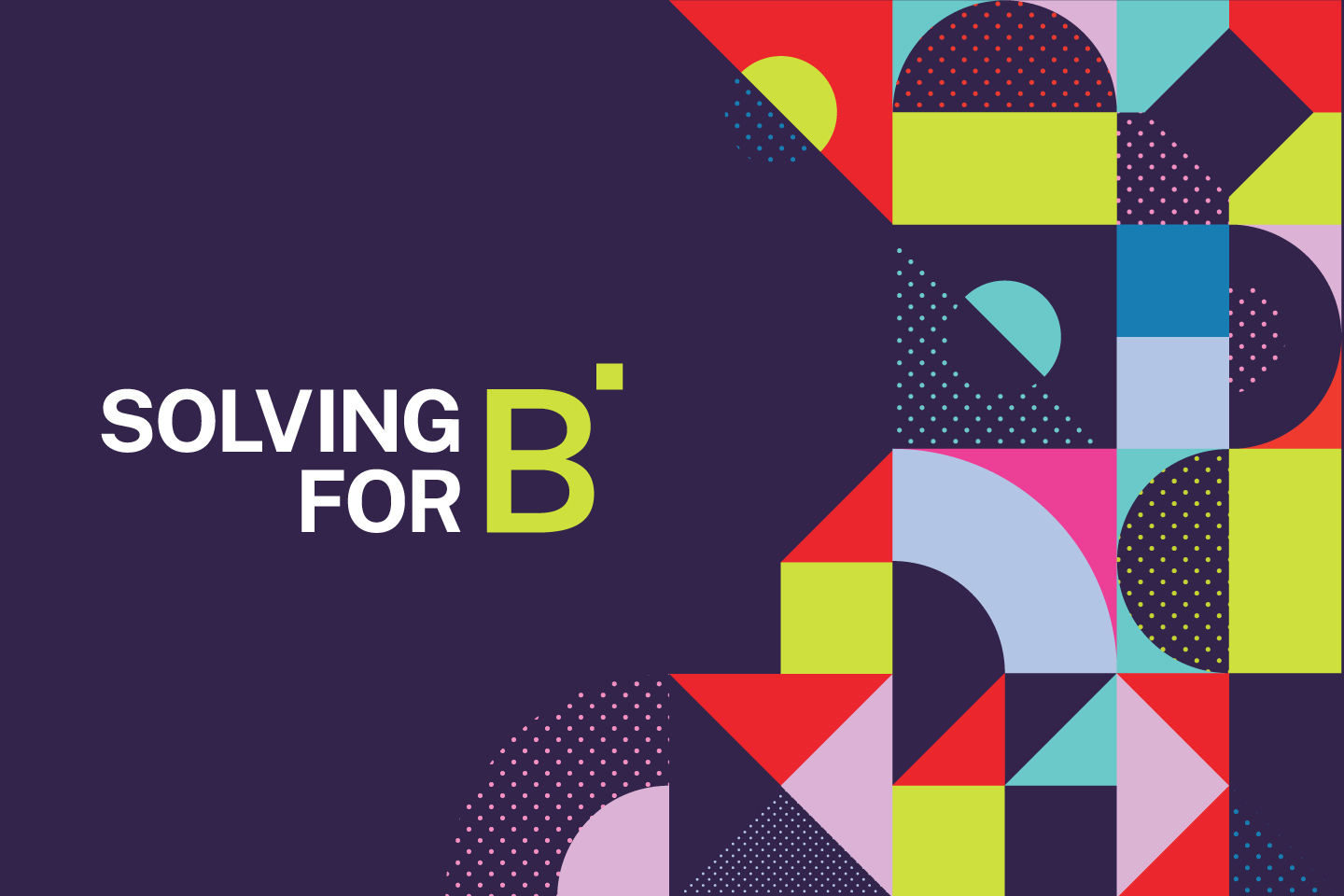Podcast
Why Branding is a Powerful Business Solution


Why Branding is a Powerful Business Solution
In this episode of the Solving for B° Podcast, Bo Bothe, Jonathan Fisher and Leslie Rainwater of BrandExtract discuss the many issues that can be uncovered and solved in the branding process. They offer insight into why branding should be considered a business solution and tell you why thinking of branding as simply a communication strategy is the wrong approach. They'll also provide some examples of situations that may indicate the need for a rebrand.
Read the Transcript
*This transcript has been edited and formatted for readability.
What Business Problems Can Branding Solve?
Chris: Today's topic is branding as a business solution. But when we were preparing for the show, it became clear that this episode is not about looking at branding as a communications strategy or a visual refresh. A branding or rebranding exercise should be about improving your business.
So, how can a branding effort improve a business in a way that some may not immediately realize?
Leslie: There are several ways you can do that. It's pretty complex and it's very broad. Customers at risk could be an issue. As you start to analyze your brand and understand who's really on board with you and who's not? And what can you do to make that better?
You can also look at the services you provide: are they on target? Are they the right ones? Are there offerings you could add more services to?
Also, operational gaps. You can talk to your employees and your customers to figure out what you are missing and what are some things that you could do within your own organization to build your brand and increase awareness in the community.
Bo: Our whole focus on brand is less about the communications part. This happens after you understand the brand. It’s more about how the business operates and how it acts.
There are people that are impacted by how a brand acts, feels and who they hire to be in charge of that. It's the operations. But what can they deliver? What can't they deliver? What promises can they make? What promises shouldn't they make?
It also impacts the customers. Not just the ones that love your product but the ones that might love it if they thought better of you, and the ones that left because they didn't think they were getting what they wanted.
Business strategy, direction, markets – all these things come out of a brand research program.
Jonathan: Even price positioning. I have seen services that are either overvalued and not selling, or undervalued and not selling. The price points can be completely off and that's uncovered sometimes in the research of the brand process.
Things to Consider When Branding or Rebranding
Chris: When we're creating a brand from scratch or rebranding, what are some of the things that need to be considered?
Should we look at the competitive landscape? Who do we need to speak with to put a structure around the brand?
Bo: Our general approach is to talk to the leadership team. What is their strategy? What do they think they want to do? How do they believe they need to be branded? Where do they need to go?
The next step is to talk to their staff, employees and teams, and see what is really going on there. Are they really delivering what leadership says? Do they understand what leadership means? Do they understand the direction?
Then talk to customers, both lost and existent. You might even need quantitative research, given a larger sample of prospective customers, to see what their feelings are about the brand, the product or the market.
Then look at the marketplace. What are the competitors saying? How are they referring to themselves? How are they talking about themselves?
Putting these analyses together, based on insights and research, and then mixing it all up, will let you figure out where the brand falls out.
Chris: Once you talk to these folks, you get a feel for how they perceive themselves and how others perceive the brand. Is this when you start to find gaps and opportunities? Does this happen in those conversations or does it happen further down the road?
Jonathan: You're going to look at everything Bo just said. I think he's being generous in how he simplified the process because, often, we dig into their CRM systems and look at the sales data. We do market research, list analysis, comparisons, etc.
We do social reviews on the different platforms and the consumer reviews that are out there on the company, service, product and individuals. We even look at everything on their LinkedIn profiles.
You're really looking at everything you can get your hands on. What are the business sectors saying? How are they saying it? What are they putting into it? All of these things ultimately create the brand story that's being told by the organization.
We have even looked at RFP situations for a lot of corporations. How are they responding to the RFP process? That's huge for some of our clients.
I think the process that Bo described, at it's broadest reach, is how you approach it from a strategic standpoint. But you're really digging into all the tactical moving parts of the brand.
Chris: You’re getting a 360-degree view of the brand.
Leslie: Part of your question was about identifying gaps and opportunities. Once we get a comprehensive view, we start to uncover things that will lead to something else. And sometimes, these are issues that are very easy and quick to fix.
We had a client that was a customer service group. They felt like they were very responsive to their clients. And although they were, they weren't accessible. Whenever they answered the phone, they were very receptive, but they rarely ever answered it.
In the process of doing their assessment, we were able to give that feedback to them. They immediately implemented measures to start working on that part of the brand. So it was a gap that was very critical to their service. But they were able to correct it pretty quickly.
Jonathan: Part of that issue was the phone system itself. The technology was not only a procedural process but sometimes – and in this case – a hardware process.
More Than a Communications Exercise
Chris: I think people who don't deal in branding every day, look at it as simply a communications exercise. Perhaps a visual refresh or a website update.
Do you know why that might be? Why is that misconception out there?
Bo: It might be because those are the easy issues to fix. Like a website or product problem.
Earlier, we mentioned the initial steps for branding. What's your strategy? Who's the customer? What do your employees think? How do you deliver? What does the market think?
But there's a depth to that, as Jonathan said. I think it's easy to be high-level and say, “It's our logo,” “It's our website” or “It's our brochure.” “Our slide deck explains why people aren't buying what we're doing.”
The reality is that it's hard to look deeper and go, “Why aren't we delivering on the promises we're making?” It's about a promise. It's about delivering on those messages and connecting with people. You have to have some depth to be able to do that.
Leslie: It's the promise and the perception. You're measuring if what you believe you are doing or offering matches what you’re actually doing. “I feel like I'm giving a service and I'm meeting the marketplace need.” Then when we start asking questions and it turns out that you're not doing that at all. That's part of the brand.
People often look at it as my logo, my colors, how I talk in the marketplace. But it's really about where it all connects and how people both deliver and receive the service or product.
Bo: Branding isn't communications. There's a difference. There are communication tactics that you use to communicate brand ethos – the brand in the marketplace. But branding is not communications. It's a perception.
Branding Solution Examples
Chris: Can you think of an example where a customer came to us asking for a rebrand and then we uncovered that the problem was actually something else, maybe something bigger?
Jonathan: Most of the clients that come to us usually have a strategic goal in mind. It might be more sales, penetrating a new market, launching a new product, dealing with a new competitor, disruptive technologies or regulatory compliance changes.
We had a technology company that was, at one point, a market leader. Over a period of several years, sales had started declining. They couldn't figure out why. So the assumption was we just need more advertising or to update the brand. “Maybe it's gotten a little tired.”
But through the research process, we were able to identify that some of the product and service offerings were no longer relevant. The marketplace had shifted. Their price points were off target. The way they were bundling their services was not even accurate anymore for the marketplace.
This is an example of a company that got a little complacent with their product and service because they had been top dog for too long. But things can turn on you pretty quickly in the marketplace. You don't always know why, so you should always be monitoring and managing the brand in the marketplace to identify those issues.
Bo: A physical example of one of our clients is GSE Environmental. They do linings for landfills and coal ash plants, and they basically protect the bad stuff from mixing with the good stuff.
They came to us because their private equity group wanted to rebrand around being green. Seemingly, that might make sense, except they didn't have any recycle bins in the whole place, and they make plastic that goes in landfills.
So we had to talk to different countries around the world, in different dialects to get an understanding of what really made the brand tick. The reality was it was durability.
Their strategy was right. They were in the right ballpark, but they could have gone to market in a way that would've been horrible for them. Based on all the conversations we had with their consumers and their employees, it wasn't an environmental purchase. It was a protection, a durability and a reliability purchase.
Had we not gone as deep as we went, talked about the sales process and dug into all the stuff we have been talking about, they could have made a really bad decision that looked good on paper but wouldn't have been the right approach to take.
Chris: It sounds like most people come through the door thinking, "We're missing something” or “we need something extra to boost sales and to increase the health of the company.” But sometimes it's about simplifying or taking something away.
Jonathan: We've worked with a number of manufacturers that often think like manufacturers. This means they love the widget they make. And in many cases, when they tweak the widget, in their minds, it becomes a new product and it gets a new SKU. Over time, they end up with 5,000 of these things. And to the consumer, they're pretty much the same thing but with an optional setting or feature.
Many times clients collapse down to a product line, instead of having an individual product, category or segment. We've seen it with medical devices, technology offerings, chair manufacturing, you name it.
We had a client that had a premium software product for engineers, and they were consistently losing clients at the renewal stage. They had turned the renewal process into a resale. Their competitor was coming in with a two-page switching contract whereas our client was making legal departments review and sign and resign a 36-page contract.
As evidence of paring down, we had a client that was in the manufacturing space for a drilling product. They would get the engineering specifications from their client, and then they would want to re-engineer the engineering specifications to make it even better.
In reality, they were slowing down the product delivery, increasing the price point and jeopardizing the bonus of the project manager that was their client. So here they were adding a step to the process, while in reality, they were doing the exact opposite of what they thought that step would do for them in terms of sales.
Bo: Their intent was added value. “If we add our layer of brilliant engineering on top of this, the product is going to be even better.” But the perception of the customer was, “Man, you're slowing this process down. You're making me look bad.”
In almost 99.9% of these cases, the client has the right intentions. The problem is that they sometimes put things in the way of what they really do best. That's where, as a business solution, branding can be huge. Sometimes it's just the taking away of something; the simplification of it that helps people really understand what they do best.
The Ultimate Goal of Branding
Chris: What should the goal of a brand or a rebrand be?
Leslie: Overall, the goal should be to take a step back, look at the brand from a 360° perspective and conceptualize our strategy where it belongs. You need an open and inquisitive mind to say, “I'm going to raise the hood here. I'm going to let everybody see what's going on.”
Then take all that feedback and make the strategic changes that correspond to what you're going to do. But you have to be willing to jump in and know that this may change your business.
You will have to listen to some hard stuff, and you might even need to expand your thinking about something. Like we talked about, taking services away, adding services, switching how we talk about the business. It's like trying to figure out how to talk about your company and how to reach out and provide the right service.
Bo: Ultimately, we’re making the business better.
It's not about having a new logo, a new brand position or a new strategy. It's about making the business better.
What do we need to take out? What do we need to add? What do we need to emphasize? What do we need to de-emphasize?
That's why we look at so many things so deeply in the branding process. We need to really understand what we can get out and what we need to enhance because that's the end goal – to make the business better.
Jonathan: When you actually do that, you increase the number of leads, the quality of the leads, the deal size, and you can reduce attrition and shorten the sales cycle.
So when you look at that sales funnel process, if you move each one of those just a tiny amount, 5%, 2%, 10%, it has a compounding effect on the back end.
That's where you see that substantial lift and traction you get, which is the ultimate benefit. You have your goal, and then you have the benefit of that goal, which is the acceleration and growth that most executives are looking for.
Bo: Which in the end, makes the business more valuable.
The intent of this process is not just to make the perception that the business is more valuable. It's to make the business more valuable, get the operations set, make everything go right, talk to the right people, optimize how much you're getting out and make the business more valuable.
Jonathan: Then your share price goes up and you get an added multiple when you go to get sold. Or you defend yourself with cost of entry from a cheaper competitor because people will pay more for a brand that they know, trust and love. You can protect your territory. That's what we're trying to do for our clients.
Chris: One thing that Leslie said that I found pretty interesting was that in this process, you need to be open to change. You need to understand that whenever you do pop that hood, you may find some things that you're not comfortable seeing; things that you have to take an honest look at and make those changes.
Well, I think we've covered this thoroughly. Thanks, guys. I really appreciate your time.






